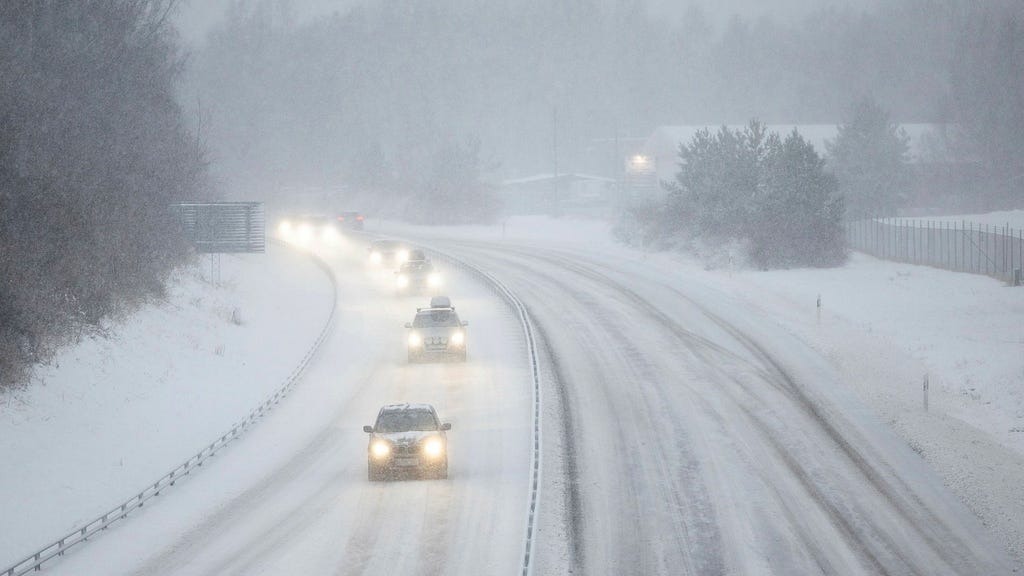The Swedish Meteorological and Hydrological Institute (SMHI) has issued yellow warnings for snowfall across a significant portion of Sweden, encompassing central and northern Götaland, southwestern and northwestern Svealand, and southernmost Norrland. These warnings are in effect from Thursday morning and are expected to last for approximately 24 hours. The anticipated snowfall carries the potential for disruptions across various sectors, including power outages, telecommunication interruptions, and significant traffic challenges. Commuters are advised to anticipate extended travel times due to slippery road conditions, reduced visibility caused by heavy snowfall and snowdrift, and the potential for traffic accidents or stalled vehicles. SMHI strongly recommends allocating extra time for journeys and adjusting driving speeds to match the prevailing road conditions and visibility.
The impending weather event stems from a low-pressure system tracking northeastward across the country. This system carries a substantial precipitation field that is expected to initially manifest as rain in southern Sweden. However, as the system progresses, the precipitation will transition to snowfall across a broad swathe of the affected regions. The snowfall accumulations are projected to reach 10-15 centimeters in most areas, with localized amounts potentially reaching up to 20 centimeters. This significant snowfall, coupled with the anticipated winds, creates a heightened risk of challenging travel conditions, particularly during the morning and evening commutes.
The heavy, wet snow anticipated with this weather system presents a specific threat to power and telecommunication infrastructure. The weight of the accumulating snow can stress power lines and communication cables, potentially leading to outages. Furthermore, strong winds associated with the low-pressure system can exacerbate this risk by increasing the strain on these infrastructure components. Residents in the affected areas are encouraged to prepare for potential power and communication disruptions, ensuring they have alternative means of communication and access to necessary resources. Staying informed about weather updates and following safety guidelines issued by local authorities is paramount.
The potential for traffic disruptions is a significant concern with this snowfall event. The combination of heavy snow, reduced visibility, and potentially icy road conditions creates a hazardous environment for drivers. SMHI’s warning emphasizes the importance of cautious driving, advising motorists to reduce their speed, increase following distances, and be prepared for sudden changes in road conditions. The possibility of traffic accidents and stalled vehicles further underscores the need for preparedness. Drivers should ensure their vehicles are properly equipped for winter driving, including having appropriate tires, sufficient fuel, and emergency supplies.
The specific timing of the snowfall warrants attention. With the warnings in effect from Thursday morning and lasting through Friday, the impact on both the Thursday evening and Friday morning commutes is expected to be substantial. Individuals planning travel during these periods should exercise extreme caution and consider alternative transportation options if possible. Staying informed about road closures, traffic delays, and weather updates is crucial for making informed decisions about travel. Utilizing real-time traffic information and navigation apps can assist in navigating potential disruptions and identifying safer routes.
In summary, the impending snowfall across parts of Götaland, Svealand, and Norrland poses a significant weather event with potential impacts on transportation, power infrastructure, and telecommunications. The forecasted accumulation of 10-15 centimeters of snow, with localized amounts up to 20 centimeters, coupled with strong winds, creates a hazardous environment, particularly for road travel. Heeding SMHI’s warnings, preparing for potential disruptions, and exercising caution are crucial steps to mitigate the risks associated with this weather event. Staying informed, adjusting travel plans as necessary, and prioritizing safety will be essential for navigating the challenges posed by this substantial snowfall.














